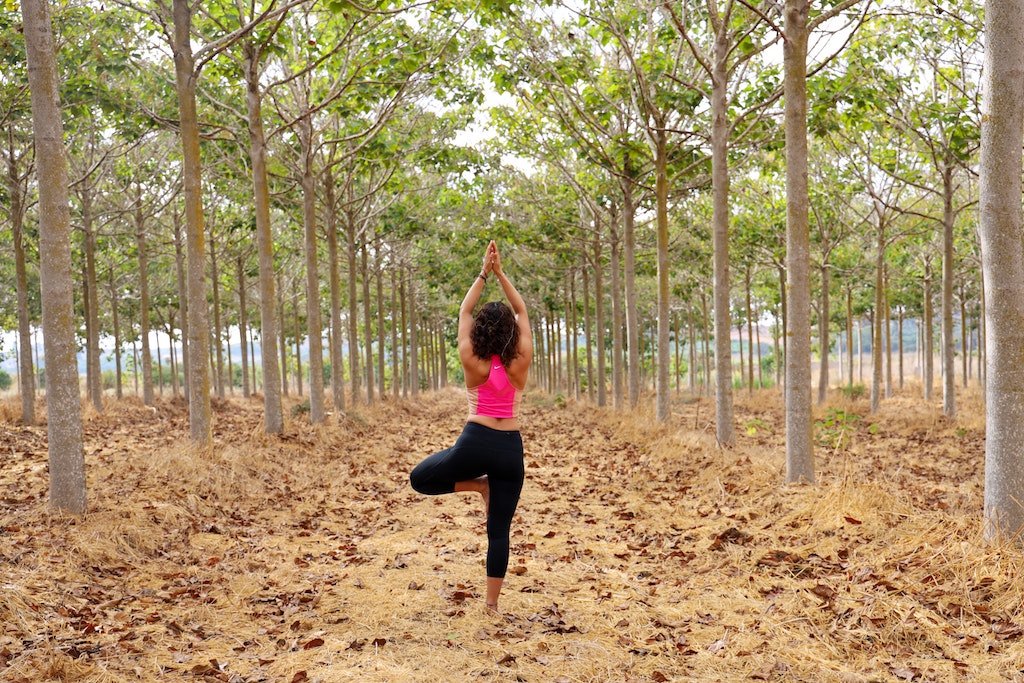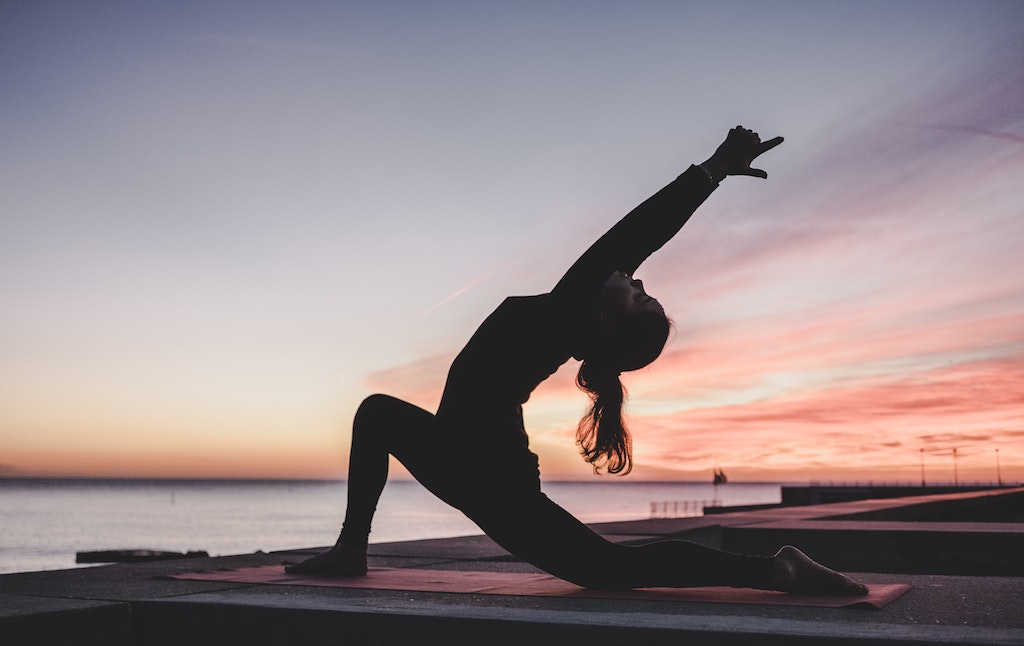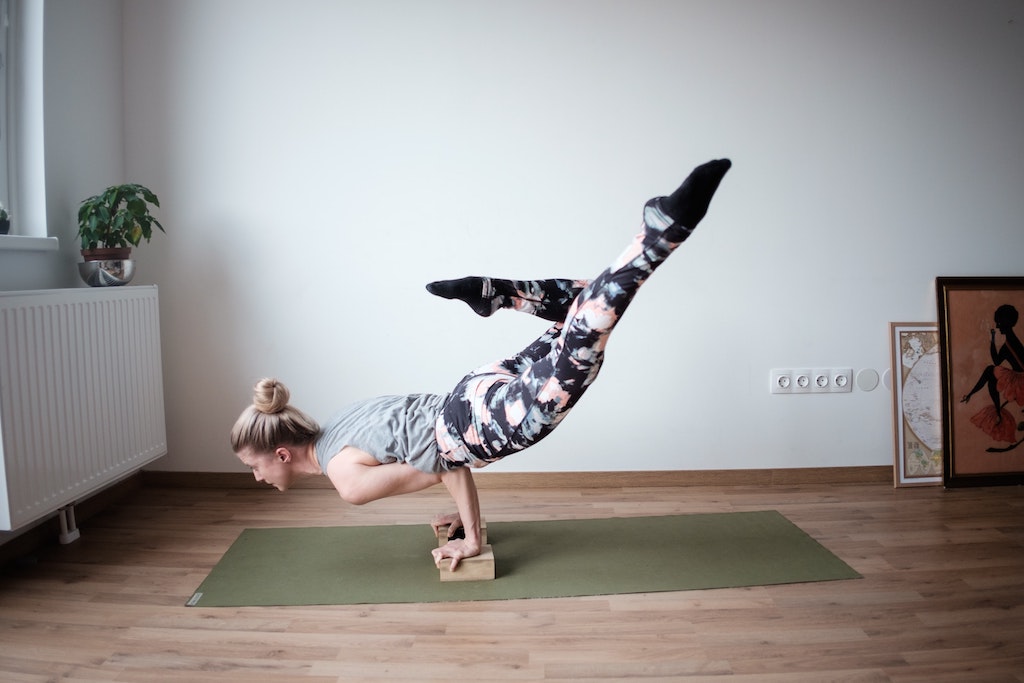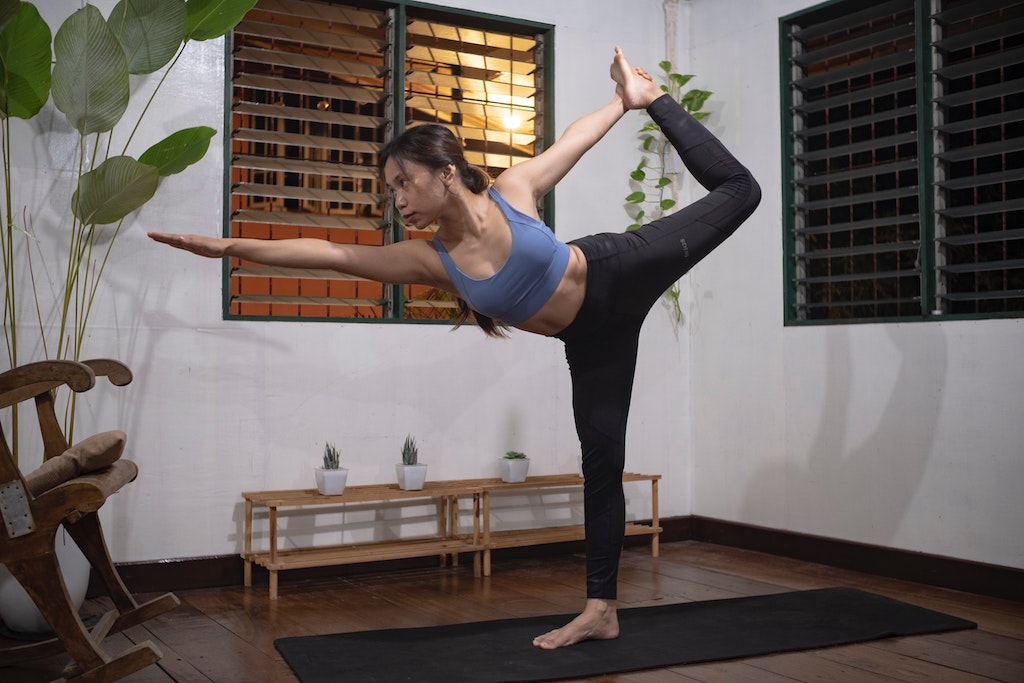Does Yoga Improve Balance?
I was reading through comments on a Yoga Instagram post the other day, and a question that kept on popping up was “Does yoga improve balance?”
Yoga improves your balance by strengthening and toning your core muscles, your pelvic floor, and your gluttes, along with the muscles that wrap around your spine.
It also aids in strengthening your postural muscles (deep muscles in your abdomen, pelvis and back), which, as the name indicates, help you improve your body posture.
Having a good balance is essential, whether it is to avoid falls or to be more comfortable in our daily life.
In this article we dive deep into how practicing yoga actually helps you improve your balance, and why it may be one of the best holistic ways to do it.
Read on to find out…
How does Yoga improve balance?
Yoga offers a wide range of health benefits and each position, in turn, offers different benefits; both for the mind, as well as for the body and spirit.
The balance positions do not work only on a physical level by strengthening the muscles necessary to keep us in position, but also work strongly on our mind, gradually bringing us into a state of inner calm.
Improves your physical balance
On a physical level, Yoga helps you improve coordination, increase strength, and develop stability.
With regular practice, you will be more coordinated and benefit from improvements in your stamina and stability, both during yoga practice, as well as in daily life.
For older people, improved stability and balance help reduce injuries due to falls, which are so common as you age.
Each Yoga balance position strengthens the muscles and joints of your body differently.
The standing positions work mainly by strengthening your leg muscles and knee joints; while balancing positions on the arms strengthen your wrists, arms, and shoulder muscles.
For this reason, you must vary your balance positions to obtain the maximum benefit.
improves your Breathing
In yoga, improving balance means working on stability, but also on calm and concentration.
Much of it involves abdominal breathing, as Daniel Lacerda writes in his book 2100 Asanas, the encyclopedia of yoga postures (ed. Marabout):
“Breathing promotes stability. If your breathing is racing, it is probably because you are going too forcefully. Release the posture a bit and let your breath settle.”
Help you attain Inner balance
The most exciting part of yoga for balance is that the positions also provide emotional benefits.
They are useful for relieving stress, reducing tension, and fatigue.
These Yoga postures also help improve your focus, concentration, and memory.
Indeed, balance is not only physical but also emotional.
Sometimes life seems so hectic and out of control that the result is to be “out of balance”.
The relaxation you experience during and after yoga classes helps bring awareness and balance to your life off the mat.
For this reason, it is very important that you observe what happens in your mind during a balance position: if your mind is calm, the practice will also be calm and stable; if your mind is turbulent, the practice will also suffer the swings of the mind.

Why use Yoga to improve balance?
Exercises that require coordination of movements, such as some yoga postures, helps us train for balance, an ability that is closely related to the inner ear, where the vestibular apparatus or posterior labyrinth is located, which, among other functions, gives information to the brain about our body posture and spatial position.
The right Yoga position prevents us from suffering alterations such as vertigo, a disorder that causes dizziness, instability, a feeling that everything revolves around us…
Also, as with the practice of other sports, these positions help to increase blood flow of the ear and eliminate stress, which in many cases is one of the causes of hearing problems.
The three pillars of balance
Your ability to stay balanced depends on three functions of the nervous system. They work closely together, on and off the yoga mat.
I’m talking about the vestibular system of the inner ear, the sense of sight, and proprioception. These three govern, respectively, spatial, visual, and sensory perception. Together, they help maintain balance.
The sensory, spatial, and visual information that reaches the brain through the senses makes it possible to maintain balance, that is, the ability to stay in an upright position and to move without falling to the ground.
What does all this have to do with yoga?
Yogis long ago discovered that the ability to execute a balancing pose is highly dependent on a mental state.
The more agitation there is in your thoughts, the less able you are to achieve or maintain a balanced posture.
Of the three mechanisms explained above, the sensory one is the one that you can exert the greatest influence on with the practice of yoga.
When you pay attention to your physical sensations, you broaden your perception of the body and gain poise.
This leads to a more serene state of mind, with consequent positive results for balance.
All yoga practice is focused on awakening body awareness, that is, proprioception.
One of the most frequently used guidelines is to focus on breathing, that is, on the physical sensation of breathing.
It is a way of awakening and expanding your bodily feeling.
What are the most effective Yoga positions to improve balance?
The trick to working on your balance is to get out of your comfort zone and not be afraid of losing your balance in order to progress.
Here are the most effective Yoga positions to improve balance:
1. The mountain posture – Tadasana
The mountain posture is ideal for working on balance.
The correct posture: stand with your feet together. The toes should be flat on the ground to mark the anchor point as much as possible.
Stand up straight with the feeling that the head is pulled up by a thread and the tailbone is pulled down to the ground.
The arms are at the side of the body, and the weight of the body is distributed over each leg.
Close your eyes while mentally focusing on your feet.
The benefits: this posture prepares you for all the other balancing and anchoring postures.
When you close your eyes, you tend to sway, that’s normal.
It is by concentrating and focusing only on your feet that you will learn to distribute your weight correctly and find the right balance.
The variant: the mountain posture can be done with the hands facing the sky in order to open the rib cage and experience more stability.
It is essential to focus on your breathing while your arms are in the air.
You may also like: Yoga for Fat People: Can Overweight People Practice Ashtanga?
2. The tree posture – Vrksansana
After having gone through the mountain position, the sequence continues with that of the tree.
The correct posture: from the feet together (for the mountain posture), simply bring the heel of the left foot to the inside of the right thigh.
For this, it is important that you are aware of the weight of your body so you can distribute it over the leg that will remain on the ground.
In order not to move, breathe gently and fix a point.
You alternate with the other leg after a few minutes.
The benefits: by working on the tree posture, you learn to maintain your balance and above all you develop your concentration.

3. The warrior’s posture – Virabhadrasana
The warrior represents Shiva, the god of Yoga. This posture is a continuation of the mountain and tree posture.
The correct posture: standing, feet together, move your right leg back and place your foot at 90°.
Bend the left knee and keep the pelvis in line with the shoulders.
While sheathing the abdominals and keeping the back straight, raise your arms to shoulder level and direct your gaze to the left hand.
Hold the posture for a minute and alternate with the other side.
The benefits: a true anchoring and strengthening posture, the warrior posture teaches you to stay balanced thanks to the contraction of the abdominals and the quest for stability enabled by the correct positioning of the arms and the gaze.

4. The crescent moon – Āñjaneyāsana
Starting Position: stand with feet hip-width apart and arms at your sides.
Bend both knees and take a big step back with the left foot (lunge).
The left leg is straight.
The right foot remains anchored in the ground, the knee is bent and aligned above the ankle.
Posture: inhale and raise your arms to the sky, on either side of the head.
Breathe slowly and deeply: with each inhale, stretch your arms a little more upwards, and with each exhale, seek to feel the anchoring of your feet in the ground, the strength and the stability of your legs.
The benefits: this posture stretches the entire anterior muscle chain, strengthens the legs and buttocks, improves the flexibility of the hips and allows to acquire more stability.

You may also like: Is Ashtanga Yoga Bad for Your Back? (All You Need to Know!)
Conclusion
Yoga is a good practice to ward off loss of balance.
But you can also do it in your daily life. While brushing your teeth, you can stand on one leg or put on your socks while standing.
Stability is also maintained by climbing the steps two by two without holding on to the handrail or by moving with books on your head, your back straight, or with a glass of water full to the brim.
The only watchword: concentration, the anchor point, and good breathing.
Did you find this post useful? Save THIS PIN below to your Pinterest Yoga board on Pinterest for later!





